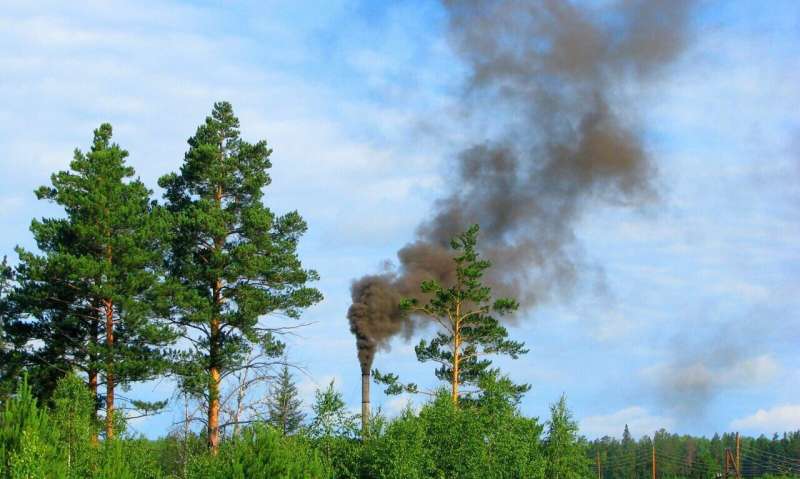Nature might be better than tech at reducing air pollution

Adding plants and trees to the landscapes near factories and other pollution sources could reduce air pollution by an average of 27 percent, new research suggests.
The study shows that plants—not technologies—may also be cheaper options for cleaning the air near a number of industrial sites, roadways, power plants, commercial boilers and oil and gas drilling sites.
In fact, researchers found that in 75 percent of the counties analyzed, it was cheaper to use plants to mitigate air pollution than it was to add technological interventions—things like smokestack scrubbers—to the sources of pollution.
"The fact is that traditionally, especially as engineers, we don't think about nature; we just focus on putting technology into everything," said Bhavik Bakshi, lead author of the study and professor of chemical and biomolecular engineering at The Ohio State University.
"And so, one key finding is that we need to start looking at nature and learning from it and respecting it. There are win-win opportunities if we do—opportunities that are potentially cheaper and better environmentally."
The study, published today in the journal Environmental Science & Technology, found that nature-based solutions to air pollution might, in many cases, be better than technology at combating air pollution.
The analysis found that for one specific sector—industrial boilers—technology is cheaper at cleaning the air than ecosystem upgrades. And for the manufacturing industry—a broad sector—both ecosystems and technology could offer cost savings, depending on the type of factory.
To start understanding the effect that trees and other plants could have on air pollution, the researchers collected public data on air pollution and vegetation on a county-by-county basis across the lower 48 states. Then, they calculated what adding additional trees and plants might cost.
Their calculations included the capacity of current vegetation—including trees, grasslands and shrublands—to mitigate air pollution. They also considered the effect that restorative planting—bringing the vegetation cover of a given county to its county-average levels—might have on air pollution levels. They estimated the impact of plants on the most common air pollutants—sulfur dioxide, particulate matter that contributes to smog, and nitrogen dioxide.
They found that restoring vegetation to county-level average canopy cover reduced air pollution an average of 27 percent across the counties. This figure varies by county and region—consider, for example, a county in the desert of Nevada and a county in the farmlands of Ohio. Even if the counties were the same size, the county-average land cover in Nevada would be smaller than that in Ohio, because the desert could not grow as much vegetation as farmland.
Their research did not calculate the direct effects plants might have on ozone pollution, because, Bakshi said, the data on ozone emissions is lacking. The analysis also didn't consider whether certain species of trees or plants would better "scrub" pollution from the air, though Bakshi said it is likely that the species of plant would make a difference in air quality.
They found that adding trees or other plants could lower air pollution levels in both urban and rural areas, though the success rates varied depending on, among other factors, how much land was available to grow new plants and the current air quality.
Reducing air pollution is critical to public health. The American Lung Association estimates that 4 in 10 people in the U.S. live in areas with poor air quality, leading to health issues including asthma, lung cancer and heart disease.
Bakshi said their findings indicate that nature should be a part of the planning process to deal with air pollution, and show that engineers and builders should find ways to incorporate both technological and ecological systems.
"The thing that we are interested in is basically making sure that engineering contributes positively to sustainable development," Bakshi said.
"And one big reason why engineering has not done that is because engineering has kept nature outside of its system boundary."
Journal information: Environmental Science & Technology
Provided by The Ohio State University




















